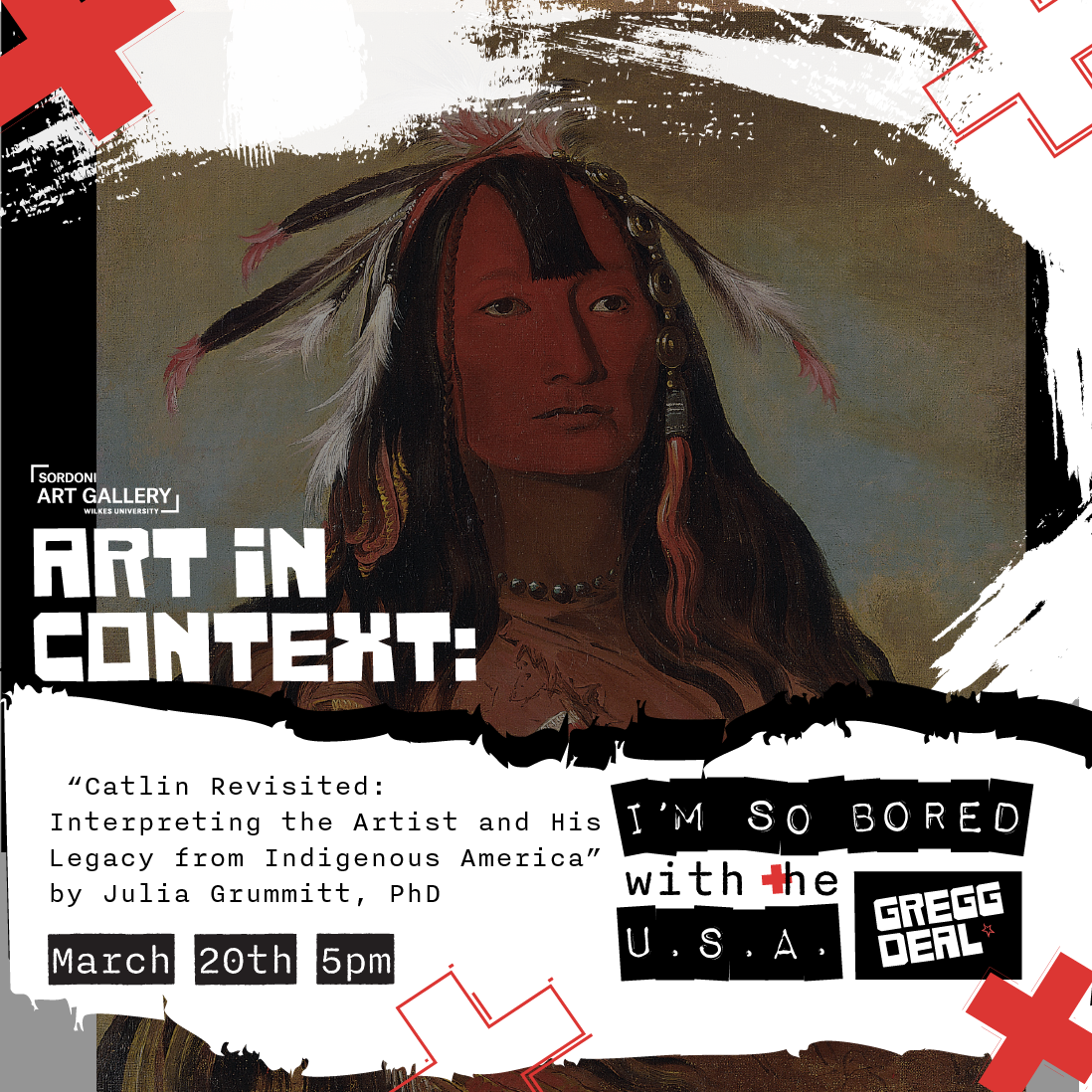
- This event has passed.
Art in Context Lecture Series: “Catlin Revisited: Interpreting the Artist and His Legacy from Indigenous America” by Julia Grummitt, PhD
March 20 @ 5:00 pm

Artist George Catlin was born in Wilkes-Barre in 1796 and dedicated much of his career to depicting Native American life and culture, becoming the best-known “Indian painter” of the nineteenth-century United States. Catlin’s paintings aimed to preserve the traditions of Indigenous peoples facing displacement but also perpetuated racial stereotypes and reflected the colonial attitudes of his era. This presentation will examine Catlin’s complex legacy, tracing evolving scholarly interpretations of his work and highlighting how contemporary Indigenous artists engage with Catlin’s imagery to reframe persistent historical narratives and challenge ongoing legacies of colonization. These perspectives offer new insights into Catlin’s role in shaping representation and identity in Indigenous art.